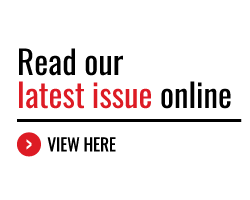Cross-border tax arrangements DAC6
By Donna Barratt (GI), Senior Associate, PwC
The EU Council Directive 2011/16 (as amended by EU Council Directive 2018/822) in relation to cross-border tax arrangements, known as DAC6, has been in force since 25 June 2018 and it aims at transparency and fairness in taxation.
DAC 6 imposes a new obligation on EU-based tax consultants, banks, lawyers, and other intermediaries to disclose any cross-border arrangement that contains one or more features or “hallmarks,” if they are identified as intermediaries for the purposes of the Directive
There is no requirement to report on purely domestic arrangements and VAT, customs and excise duties are also outside the scope of the new reporting regime. The reporting obligations only arise if one or more of these hallmarks is triggered. There are 2 types of ‘hallmarks’ – known as generic and specific hallmarks.
Generic hallmarks can be used by the authorities to catch new and innovative tax planning arrangements which may confer other benefits that do not give rise to obtaining a tax advantage and that is why they cannot be viewed in isolation, but must be considered along with the main benefits test (MBT).
Specific hallmarks are used to target known vulnerabilities in the tax system and techniques that are commonly used in tax avoidance arrangements such as loss creation. There are also specific hallmarks that look to hinder automatic exchange of information or beneficial ownership reporting, and transfer pricing.
The hallmarks themselves are categorised:
Category A
Generic hallmarks – require MBT consideration
Examples would be the use of standardised documentation and or structure which is made available to more than one taxpayer, a confidentiality condition or an arrangement where the intermediary is entitled to receive a fee based on the tax advantage received.
Category B
Specific hallmarks – require MBT consideration
Examples may be loss creation or buying a loss-making company to exploit its losses; converting income to capital; back to back intercompany loans with no other commercial function.
Category C
Specific hallmarks for cross border transactions – some hallmarks require MBT consideration, others do not
Examples may be deductible cross-border payments between associated enterprises where the recipient is essentially subject to no tax, zero or almost zero tax. Another hallmark is about deductions for the same depreciation on an asset claimed in more than one jurisdiction.
Category D
Specific hallmarks for automatic exchange of information and beneficial ownership – no MBT consideration
Arrangements which have the effect of undermining reporting requirements such as by reclassifying products into other types of income not reportable under automatic exchange of information rules or by transferring assets out to jurisdictions that are not bound by the same rules. Setting up structures that obscure the actual ultimate beneficial owner by use of blacklisted jurisdictions.
Category E
Transfer pricing – no MBT consideration
Examples might be the use of transfer pricing safe harbour rules or transfer of hard to value intangibles where there is no reliable comparable data.
Main benefit test
The main benefit test will be met if it can be established that the main benefit (or one of the main benefits) will be that the arrangement will reasonably mean that a person could obtain a tax advantage. However, the presence of certain conditions (such as the recipient being in a jurisdiction that doesn’t impose corporate tax or at a very low rate, the payment benefitting from a full exemption from tax or from a preferential regime in the other jurisdiction) doesn’t in itself mean that the main benefits test is satisfied.
Conclusion
As can be seen from the examples, the directive’s scope is necessarily wide, and the hallmarks are vague, which can make it difficult for taxpayers and intermediaries to know whether to report. Indeed, it is possible that a taxpayer may accidentally fall into this reporting regime by following a tax strategy which includes one or more of the hallmarks discussed which, despite the main benefit test, means they will be required to report. It is important to note that DAC6 applies retrospectively and applies to all cross-border arrangements between 25 June 2018 and 1 July 2020, with reporting starting on 1 July 2020.
This article summarises the key points. It is intended to provide a general guide to the subject matter and is in a condensed form. It should not be regarded as a basis for ascertaining the liability to tax or report in specific circumstances. Seeking professional advice is recommended.





